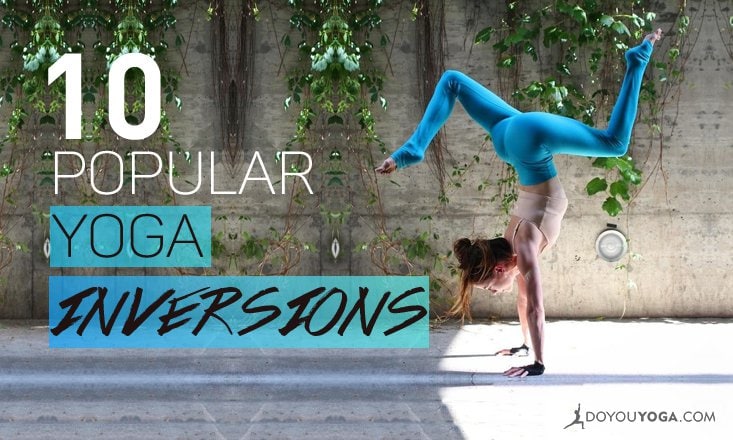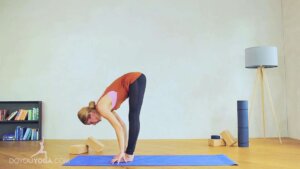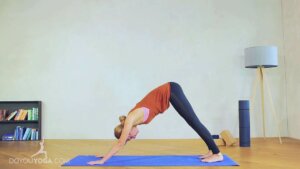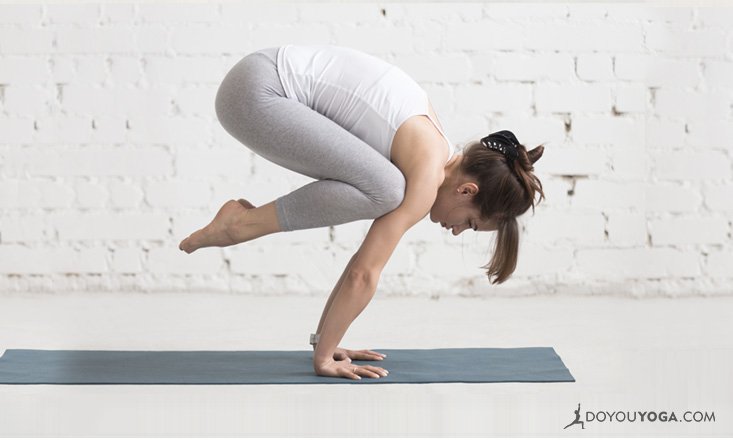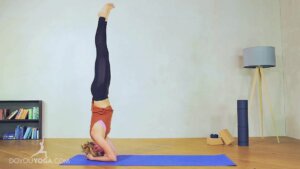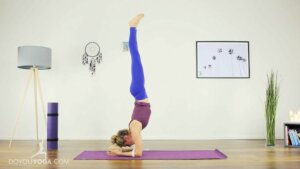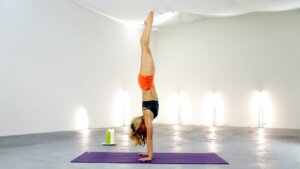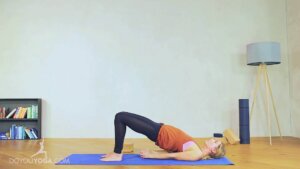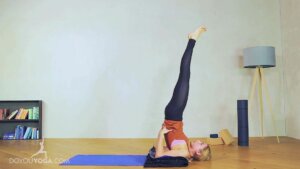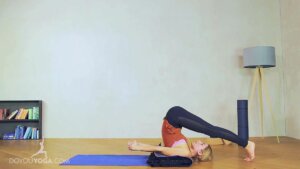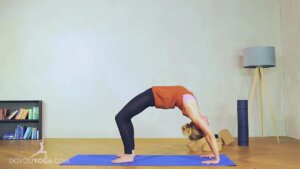Looking at yogi or yoginis’ websites and Instagram accounts can lead viewers to believe yogis spend more time upside down than with their butts planted on the earth. Why do so many yogis love going upside down?
With benefits ranging from a strengthened diaphragm to hair growth stimulation, yoga inversions have more to offer than a cool profile picture. Going upside down can be pretty scary at first! Especially if you’re new to yoga. If you’d like to get used to going upside down, why not try the free 30 Day Yoga Challenge. You’ll soon build up your confidence and get used to a new (upside down) perspective!
Here is a list of the 10 most popular yoga inversions.
1. Forward Fold Pose – Uttanasana
Forward folds can be found in yoga classes around the world in part because this popular pose is part of the Sun Salutation sequence, Surya Namaskar.
Forward folding has a range of benefits including remedying stomach pains, toning internal organs, stretching the spine, and soothing a worried mind.
Practice Tip: Shift weight towards the front of the feet to help lift the hips perpendicular to the ground.
2. Downward-Facing Dog Pose – Adho Mukha Svanasana
Some historians propose this asana was created only in the past few centuries. Whatever the case, Downward-Facing Dog pose is one of the first poses many modern yogis learn. Another asana in the Sun Salutation sequence, Down Dog is a full body workout that strengthens and stretches the body. This pose improves overall blood flow to the head and the heart by going with gravity’s natural propensity to flow down.
Practice Tip: Try to lift and root the arms up and back into the shoulder joints to lift weight out of tender wrists.
3. Crow Pose – Kakasana
A great example of how yoga poses overlap categorizes (i.e. backbend, arm balance, inversions, etc.), Crow pose is an arm balance and inversion pose. Crow pose is popular because it offers a chance to fly close to the ground and builds confidence.
Practice Tip: Sometimes the fear of falling keeps us from flying, so try falling out of crow on purpose! Start in yogi squat and control the fall by keeping the feet on the ground until the head is almost touching the earth then lift back up to yogi squat to build strength.
4. Headstand Pose – Sirsasana
The king of all asanas is well-known for many reasons including the ability to strengthen the heart physically, emotionally and spiritually. Headstand is also associated with connecting to the crown chakra. While headstands may look difficult to hold, after learning how to practice it properly and safely, yogis reap benefits like improved memory and increased self-discipline.
Practice Tip: When placing the hands together, place one pinky finger in front of rather than underneath the other pinky finger to help reduce pressure on a single pinky and distribute the weight through the outside of the palms.
5. Feathered Peacock Pose – Pincha Mayurasana
Like its namesake, the feathered peacock, this pose is a popular arm balance and inversion because of its photogenic quality and the arm, core, and balance challenge it provides.
The pose has an exciting energy and seeks adventurers with a willingness to increase their balance, strength, and daringness to fly.
Practice Tip: Measure a looped strap from one shoulder to the other, now place that strap around the forearms to help keep the arms engaged and activate the shoulders to lift upward.
6. Handstand Pose – Adho Mukha Vrksasana
It is no surprise handstands are popular, for anyone who has tried for even a millisecond can let you know it is exhilarating.
Since handstands or palm stands activate the body’s fight-flight-freeze response and energy is shared through the palms, practicing handstands help yogis release tension, increase warmth, and find space between action and reaction.
Practice Tip: Bring the shoulders over the fingers in handstand prep, since the shoulders act like a pendulum and will drift back over the wrists when the legs kick up.
7. Bridge Pose – Setu Bandha Sarvangasana
A backbend and inversion, Bridge pose is beneficial for reducing symptoms ranging from asthma to back pain.
Practiced during the closing sequences because of its cooling nature, Bridge pose is also popular as a prep pose for Wheel and on its own as a leg strengthener and shoulder and chest opener.
Practice Tip: Lift the chest to meet the chin (NOT chin to chest since this causes neck strain) for thyroid activation.
8. Shoulder Stand Pose – Sarvangasana
Usually part of a closing sequence because of its connection with the parasympathetic nervous systems, rest-and-digest response and cooling nature, shoulder stand pose uses gravity to help deoxygenated blood travel from the veins back to the heart to be oxygenated again.
Practice Tip: Keep the hips heavy on the hands to enhance the experience of weight being distributed in the shoulders and triceps and avoid weight on the head and neck.
With this experience in mind, keep the weight in the shoulders and triceps and lift the hips with the core and bring the chest to the chin.
9. Plow Pose – Halasana
A very popular yoga pose, especially early in the morning to help stimulate the internal organs and thyroid gland. A great way to wake up the body and reduce stress, Plow pose looks relatively easy to do but requires focus to avoid neck injury.
Practice Tip: To avoid overstretching and extending the neck, focus on pressing the tops of the shoulders into the ground and keeping all the weight in the tops and back of the shoulders.
10. Wheel Pose – Chakrasana
A deep backbend and fun inversion, Wheel pose builds strength in the legs and arms, as well as tones the abdominal organs. Its rejuvenating potential for spinal suppleness and strength, and connection to the seven main chakras located along the spine make this a very popular pose.
Practice Tip: Start in bridge with the hands near the head and lift with the heart and sternum to keep the lower back and body safe.
Yoga inversion poses have a fun, perspective-changing and confidence-building nature that make their rise in popularity come as no surprise. What are your favorite inversions, and what would you add to this list?
